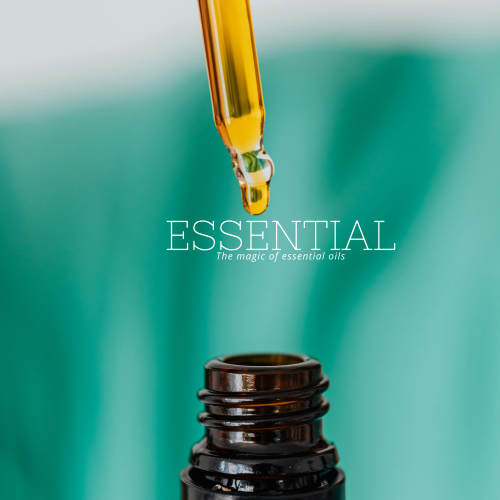Pilates Modalities: Different Impacts on our Body

Among the “body design” experiences I’ve had, Pilates has proven to be the most gently intense over the years. Before that, I had discovered the movements revealed in Therese Bertherat’s extraordinary “The Body Has Its Reasons,” an oasis for someone who was never very fond of traditional physical exercise and gym workouts. Pilates, however, brought a script for improving posture, breathing, and a profound experience with one’s own body. My interest in writing about Pilates modalities comes from the multiplicity of testimonials from friends and acquaintances, mostly positive with some controversy. The different impacts on our bodies stem from multiple factors, including the perfect match of each person with their tutors. Understanding the modalities and their purposes is very interesting to comprehend this wellness opportunity from the body in its fullness.
The world of Pilates has evolved significantly since Joseph Pilates developed his original method in the early 20th century. Today, there are several Pilates modalities that offer unique approaches to physical conditioning, each with specific benefits and differentiated impacts on the body. Understanding these variations can help practitioners of all levels choose the most suitable modality for their individual goals, whether they be rehabilitation, muscle toning, or posture improvement. Contemporary Pilates modalities have adapted the fundamental principles of the original method to meet the needs of a diverse audience, incorporating elements from other disciplines and taking advantage of technological advances in equipment.
In this post, we will explore in depth the main Pilates modalities currently available, analyzing how each one works different muscle groups and body systems. We will discuss everything from Classical Pilates to more modern versions such as Reformer Pilates and Aerial Pilates, offering insights on how you can choose the ideal modality for your body and specific goals. By understanding the mechanisms behind each variation, you will be able to make more informed decisions about your practice and maximize the benefits obtained.
Fundamentals of Pilates Modalities: Common Principles and Variations
All Pilates modalities share fundamental principles established by Joseph Pilates, including concentration, control, centering, flow of movement, precision, and coordinated breathing. However, each modality emphasizes these principles in distinct ways and introduces unique elements that create different bodily experiences. Mat Pilates, for example, focuses on using one’s own body weight as resistance, while Equipment Pilates uses specialized apparatus to add variable resistance and support.
The common foundation among all Pilates modalities is the focus on the “powerhouse” or center of strength, comprising the abdominal muscles, glutes, lower back region, and hips. This muscle group serves as the engine that drives all movements in Pilates, regardless of the chosen modality. The difference lies in how each modality accesses and strengthens this center. For instance, Studio Pilates with equipment such as the Reformer offers immediate tactile feedback on center engagement, while modalities like Clinical Pilates may use more subtle and targeted approaches.
Lateral thoracic breathing, characteristic of the Pilates method, is also fundamental in all modalities, although some contemporary variations have adapted specific breathing patterns to meet particular objectives. This integration between breathing and movement is one of the factors that distinguishes Pilates from other forms of exercise and remains consistent across different Pilates modalities, even when other aspects of the practice are significantly modified.
Mat Pilates: The Essential Foundation and Its Effects on the Body

Mat Pilates, or Floor Pilates, represents the purest and most accessible form among the Pilates modalities. Using only a mat and one’s own body weight, this modality develops functional strength through a progressive sequence of carefully designed exercises. The main impact on the body is the development of a strong center, joint stability, and refined body awareness, without the need for specialized equipment.
Mat Pilates exercises extensively work the deep stabilizing muscles that are often neglected in other forms of training. This modality creates an “inside-out” muscle recruitment pattern, strengthening the deep muscle layers first before engaging the larger superficial muscles. This activation pattern is particularly beneficial for posture and injury prevention, as it teaches the body to properly distribute effort during everyday movements.
One of the most challenging aspects of Mat Pilates compared to other Pilates modalities is the need for greater body control, since there is no external assistance from equipment. This makes Mat Pilates especially effective for developing proprioception (awareness of body position in space) and refined neuromuscular control. However, it also means that beginners may find it more difficult to maintain proper alignment without the guidance that equipment like the Reformer naturally provides.
For practitioners with specific conditions such as lower back pain or joint restrictions, Mat Pilates can be modified with accessories such as balls, resistance bands, and rollers to facilitate or intensify movements. These adaptations allow the modality to cater to various levels of physical conditioning and specific needs, while keeping its essential principles intact.
Reformer Pilates: Variable Resistance and Body Transformation
Reformer Pilates represents one of the most versatile and recognizable Pilates modalities, using a mobile platform with adjustable resistance springs. This revolutionary apparatus allows for an extraordinary range of exercises that can be adapted from gentle rehabilitation to advanced athletic training. The unique impact on the body comes from the combination of variable resistance with structural support, creating an environment where dysfunctional movement patterns, translating into more efficient movements in everyday life. can be safely corrected.

The resistance of the springs in the Reformer creates a distinct exercise environment that challenges the body in specific ways, differentiating it from other Pilates modalities. Unlike the constant resistance of free weights, springs offer progressive resistance – the more they are stretched, the greater the resistance. This characteristic creates a dynamic demand that forces the body to continuously stabilize throughout the entire range of motion, resulting in superior neuromuscular training. The unique relationship between resistance and support allows people with injuries or physical limitations to perform movements that would be impossible or risky in other modalities.
Reformer Pilates is particularly effective for developing strong and toned upper and lower limbs, while maintaining ideal postural alignment. The resistance of the springs can be adjusted to focus on developing strength or muscular endurance, depending on individual goals. Athletes frequently incorporate the Reformer into their training programs to develop controlled explosive power and dynamic stability, while people in recovery appreciate the equipment’s ability to support body weight during rehabilitation.
The physical impact of the Reformer includes balanced muscular development, improved dynamic posture, and significant increase in muscular integration. Compared to other Pilates modalities, the Reformer often produces visible results more quickly in terms of muscle definition, especially in the extremities. However, the true value of this modality lies in how it trains the body to maintain ideal alignment during complex and multiplanar movements,, translating into more efficient movements in everyday life.
Cadillac and Chair: Pilates Modalities for Three-Dimensional Challenges
Among the various Pilates modalities, the Cadillac (also known as the Trapeze Table) and the Chair (Wunda Chair) represent equipment that allows unique three-dimensional challenges for the body. The Cadillac, with its imposing structure similar to a bed with a metal tower, offers complete support for the body while allowing movements in all planes, making it ideal for both rehabilitation and advanced training. The Chair, compact but challenging, concentrates exercises in a reduced space that demands extreme stability.
The Cadillac impacts the body in a singular way among the Pilates modalities due to its incomparable versatility. With bars, trapeze, springs of different tensions, and adjustable straps, this equipment can create a total support environment for people with limited mobility or conditions that require significant assistance. Paradoxically, it also allows for some of the most challenging exercises in the Pilates method, such as inversions and acrobatic movements that challenge the strength and coordination of advanced practitioners. This duality makes the Cadillac particularly valuable in rehabilitation environments that serve patients with different needs.
The Chair, in turn, stands out among the Pilates modalities for its ability to develop intense functional strength in a compact space. Exercises on the Chair frequently involve long levers and unstable positions that require exceptional core control. The impact on the body includes accelerated strength development, especially in the arms, legs, and spine stabilizers. The Chair is notoriously challenging due to the small base of support it offers, making it particularly effective for athletes and advanced practitioners seeking to improve balance and coordination.
Both pieces of equipment allow transitions between sitting, standing, lying, and inverted positions, creating a complete three-dimensional experience that other Pilates modalities cannot always provide. This characteristic develops bodily adaptability and prepares the practitioner to respond efficiently to unexpected physical challenges of daily life. Work on these apparatus also promotes superior integration between the extremities and the center, ensuring that the strength developed is truly functional and applicable to everyday and athletic movements.
Clinical Pilates: Therapeutic Approach for Rehabilitation and Pain Relief
Clinical Pilates represents one of the most specialized Pilates modalities, developed specifically to address rehabilitation issues, chronic pain management, and post-surgical recovery. Different from modalities primarily focused on physical conditioning, Clinical Pilates integrates knowledge from physical therapy, biomechanics, and traditional Pilates principles to create individualized programs that respond to specific medical needs. This therapeutic approach is often conducted by professionals with healthcare training such as physical therapists and occupational therapists specialized in Pilates modalities.
The impact on the body during Clinical Pilates is meticulously controlled, with emphasis on precise and often microscopic movements that reeducate dysfunctional neuromuscular patterns. This modality frequently uses visual feedback (such as mirrors or biofeedback technology) and proprioceptive feedback to help patients recognize and correct harmful movement patterns that may be contributing to their conditions. Progression is typically slower than in other Pilates modalities, prioritizing quality over quantity and ensuring that each advancement is built upon a solid foundation of motor control.
Among the conditions commonly treated with Clinical Pilates are disc herniations, temporomandibular joint (TMJ) disorders, post-surgical recovery, post-stroke rehabilitation, scoliosis, and various chronic pain syndromes. The success of this modality often lies in the ability to isolate specific movements while stabilizing adjacent areas, allowing for strengthening of compromised structures without overloading injured tissues. This specificity represents a fundamental distinction between Clinical Pilates and other more generalized Pilates modalities.
It is important to note that, although all Pilates modalities can offer therapeutic benefits, Clinical Pilates differentiates itself through the comprehensive functional assessment that precedes intervention and through the integration of specific medical protocols. Many practitioners begin with Clinical Pilates during injury recovery and gradually transition to other modalities as they regain function and confidence in their bodies. This gradual transition represents a continuum of care that demonstrates the versatility of the Pilates method as a whole.
Contemporary Pilates: Fusion and Innovation in Pilates Modalities
Contemporary Pilates represents the natural evolution of Pilates modalities, incorporating current research in exercise science, biomechanics, and techniques from other disciplines such as yoga, dance, and functional training. This approach is characterized by adaptability and openness to explore variations that may go beyond the classical repertoire established by Joseph Pilates, while still keeping his fundamental principles intact. The bodily impact of this modality is multifaceted, combining the traditional benefits of Pilates with new dimensions of movement and conditioning.
Among the various contemporary Pilates modalities, we find variations such as BASI Pilates (Body Arts and Science International), Stott Pilates, Fletcher Pilates, and Balanced Body. Each system has developed its own modifications and emphases, responding to different philosophies about ideal movement and bodily needs. For example, Stott Pilates modified the neutral position of the pelvis to better respect the natural lumbar curve, while Fletcher Pilates incorporates percussive and rhythmic elements inspired by dance techniques.
A distinctive characteristic of Contemporary Pilates is the incorporation of innovative equipment and accessories that expand the repertoire of traditional exercises. Devices such as the CoreAlign, Bodhi Suspension System, and Oov have introduced new stability and mobility challenges to Pilates modalities, creating unique neuromuscular stimuli. These pieces of equipment frequently enhance the proprioceptive element of training, forcing the body to constantly adapt to unstable surfaces or variable resistance in multiple planes.
The impact on the body during contemporary practices often includes greater integration of the fascial systems (connective tissue), awareness of the complete kinetic chain, and specific functional training for everyday or athletic activities. Compared to more traditional approaches, Contemporary Pilates tends to incorporate more dynamic movements and fluid sequences between exercises, creating a more cardiovascular experience than some classical Pilates modalities. This evolution reflects our expanding understanding of how the human body responds to movement and how different body systems interact during exercise.
Aerial and Suspension Pilates: Challenging Gravity and Proprioception

Aerial and Suspension Pilates represents one of the most recent and innovative additions to Pilates modalities, combining traditional principles of the method with elements of suspension training and aerial arts. Using suspended structures such as fabrics, trapezes, and rope systems, this modality introduces a completely new dimension to the practice by partially eliminating the effects of gravity and creating controlled instability. The bodily impact is distinctive, offering joint decompression while deeply challenging the proprioceptive system and deep stabilizers.
The partial or total suspension of the body creates a unique exercise environment among Pilates modalities. When suspended, the body must constantly recalibrate its position in space, activating deep postural reflexes and neural pathways that are rarely stimulated during traditional floor exercises. This intensified proprioceptive demand results in notable improvements in coordination, balance, and functional stability that frequently transfer to everyday and athletic activities.
A significant benefit of Aerial Pilates for the musculoskeletal system is vertebral and joint decompression. By suspending the body in various positions, this modality creates natural traction in the joints, allowing space for nutrition and hydration of the intervertebral discs and cartilage. This effect makes Aerial Pilates particularly beneficial for people with chronic joint compression, herniated discs in recovery, or those seeking recovery after repetitive impacts from other sports.
Compared to other Pilates modalities, Aerial Pilates frequently generates greater involvement of the core muscles and scapular stabilizers due to the constant need to counterbalance the inherent instability of the suspended supports. Practitioners often report a sensation of “discovering muscles” that they couldn’t access in traditional modalities. Additionally, playful and fluid elements create a unique psychological component, reducing the perception of effort while increasing mental engagement with the practice.
Pilates for Specific Populations: Adaptations of Pilates Modalities
//.Pilates modalities demonstrate remarkable versatility in their ability to adapt to meet the needs of specific populations. Modalities such as Pre and Postnatal Pilates, Pilates for Seniors, Pilates for Athletes, and Pilates for Neurological Conditions exemplify how the fundamental principles can be modified while maintaining their essence and effectiveness. These adaptations consider not only physical limitations but also specific objectives and relevant contraindications for each group. Pre and Postnatal Pilates, for example, modifies traditional Pilates modalities to accommodate the biomechanical and physiological changes of pregnancy and postpartum recovery. During pregnancy, the focus often shifts to pelvic stability, support for the changing posture, and specific strengthening to prepare the body for childbirth

Prone positions (lying face down) are replaced, the intensity of abdominal work is adjusted, and greater attention is given to the pelvic floor. In the postnatal period, careful progression specifically addresses the recovery of abdominal diastasis and deep reactivation of the core muscles.
For the elderly population, Pilates modalities are adapted to promote functional independence, fall prevention, and maintenance of bone density. Exercises often emphasize safe weight transfers, controlled joint mobility, and functional strengthening for daily activities such as rising from chairs and climbing stairs. Intensity and speed are adjusted, although precision and control remain equally important. The impact on the body includes significant improvements in posture, balance, confidence in movement, and preservation of range of motion.
In the athletic context, Pilates modalities are adapted to complement specific sports demands, correct common imbalances, and prevent characteristic injuries of each modality. For runners, the focus may be on gait mechanics and unilateral stability; for golfers, controlled thoracic rotation; for swimmers, scapular mobility and shoulder girdle strengthening. These adaptations work on specific elements of athletic performance while promoting active recovery and sports longevity.
.
Integrating Different Pilates Modalities: Creating a Personalized Practice
The true art of maximizing the benefits of Pilates lies in the strategic integration of various Pilates modalities to create a personalized practice that meets specific goals and respects individual body needs. A well-designed program often combines elements of Mat Pilates, work on the Reformer, specialized exercises on the Cadillac or Chair, and possibly incorporates contemporary elements such as suspension training or work with accessories. This integrated approach creates varied stimuli that challenge the body in complementary ways.
Understanding the specific strengths of each of the Pilates modalities allows for creating progressive sequences that develop skills in a logical and safe manner. For example, beginners often benefit from starting with some fundamental Mat classes to develop basic awareness of the principles, progressing to the Reformer where equipment feedback can refine the understanding of these concepts. As competence increases, more challenging modalities such as the Chair can be introduced to increase intensity, while occasional sessions on the Cadillac can address specific mobility or stability needs.
For specific conditions or particular goals, the combination of Pilates modalities can be especially powerful. Someone recovering from a lower back injury, for example, may benefit from the therapeutic approach of Clinical Pilates in the initial phases, incorporate work on the Reformer to safely strengthen the spine stabilizers, and eventually transition to more intense challenges on the Mat as recovery progresses. This logical progression through different modalities respects the recovery process while maintaining engagement and motivation.
Experienced instructors often observe that different Pilates modalities reveal distinct aspects of a person’s movement capabilities and challenges. Some deficiencies may not be evident in Mat work but become immediately apparent when the person works on the Reformer or Chair. This revelation of “blind spots” allows for a truly comprehensive program that addresses specific deficiencies using the most appropriate tools available within the vast Pilates system.
Frequently Asked Questions about Pilates Modalities
1. Which Pilates modality is best for beginners? For beginners, it’s generally recommended to start with Mat Pilates classes to learn the fundamental principles, or private Reformer sessions where the equipment can provide additional support and immediate feedback. Among the Pilates modalities, these tend to offer clearer progressions and allow you to develop basic body awareness before advancing to greater challenges.
2. How many times per week should I practice Pilates to see results? The ideal frequency depends on your goals and which Pilates modalities you’re practicing. Generally, 2-3 weekly sessions of 50-60 minutes provide visible results within 8-12 weeks. Advanced practitioners may benefit from up to 4-5 sessions weekly, potentially combining different modalities for varied stimuli.
3. Can I combine different Pilates modalities in the same week? Absolutely! Combining different Pilates modalities often provides the most balanced program. For example, a Mat class to develop independent body control, a Reformer session for strength work and alignment, and perhaps a contemporary or suspended class for additional stability and mobility challenges.
4.Does Pilates replace traditional strength training? While many Pilates modalities, especially those using the Reformer, Cadillac, and Chair, develop significant strength, they emphasize control, stability, and muscular endurance over maximum strength. For specific hypertrophy or maximum strength goals, consider Pilates as a valuable complement to traditional strength training, not as a complete replacement.
5.Which Pilates modality burns the most calories? Among the Pilates modalities, those that maintain continuous movement with dynamic transitions generally result in higher caloric expenditure. Flow Reformer Pilates, Jumpboard (jumping exercises on the Reformer), and contemporary modalities that incorporate cardiovascular elements tend to elevate the heart rate more. However, Pilates was primarily designed for muscular conditioning and not as cardiovascular exercise.
6.How do I choose between group classes and private sessions? For beginners or people with specific conditions, private sessions allow for individualized attention and personalized progression through the various Pilates modalities. Group classes may be suitable for intermediate practitioners who already understand the basic principles. Ideally, start with a few private sessions before transitioning to group classes.
